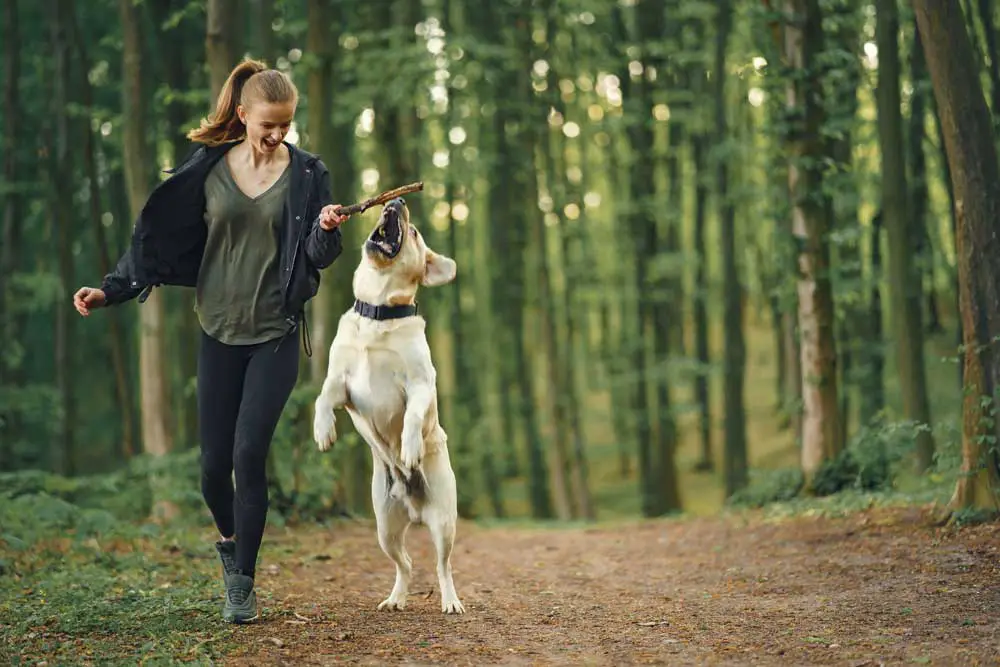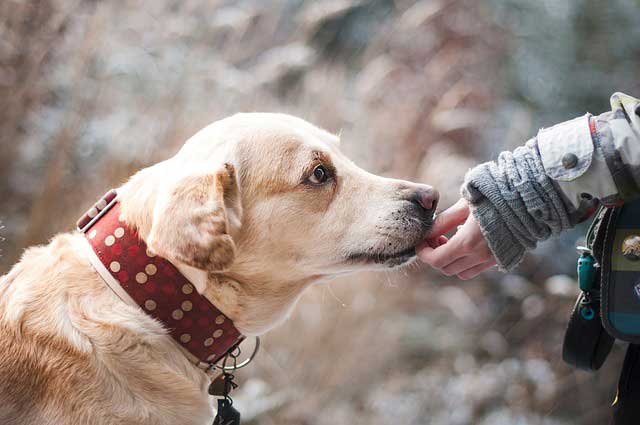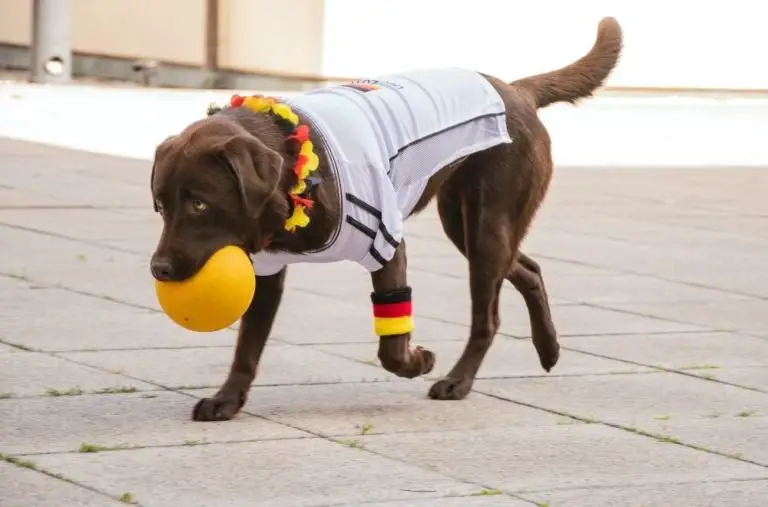Dog Exercise: How To Exercise Your Labrador And Keep Them Fit
Labrador Retrievers are among the most favored home pets around the world. They are very intelligent and have a greater than life personality.
While Labs are naturally strong and athletic, they need regular exercise to stay healthy and in perfect condition. A good amount of exercise will keep your Labrador physically and mentally stimulated, happy, and well-behaved throughout the day.
But how do you exercise your Labrador and keep them fit? What amount of exercise do they need a day? Is it alright to skip a day or two of going out with your lovely pet? We’re here to provide answers to these and other questions that most Lab owners ask.
Why Do Labradors Need Regular Exercise?
Before you adopt a Labrador or get a puppy from a breeder, every dog professional will tell you that you first evaluate whether you are in a position to meet their daily exercise requirements.
No matter the age of the dog, Labs come with heavy exercise needs that only a few people are in a position to meet. So, why exactly do these dogs need a high level of activity to stay strong? Well, let’s examine them closely to discover more.
Labrador retrievers were originally bred for retrieving game for the human hunters. The job involved hiking with their human partners, running, and swimming when necessary- duties that call for a high energy breed to accomplish effectively.
Although with time Labradors have embraced a different profession, the modern family-pet Labrador retrievers still carry the traits of their ancestors in their genetic composition.
Their bodies are in constant craving for work, and that’s why you have to find a way to keep them physically and mentally stimulated.
An adequate level of exercise will also keep your dog’s cardiovascular system functioning properly and more efficiently.
The same way humans have to exercise to keep their hearts and blood vessels healthy, Labs need regular exercise to get the most from their cardiovascular systems.
Exercise improves their blood circulation, ensuring that body tissues get enough amount of oxygen and nutrients to stay healthy.
How Much Amount of Exercise Do Labradors Need?
Since Labradors are high energy dog breeds, they need a high level of activity. According to the People’s Dispensary for Sick Animals (PDSA), a healthy and mature Labrador will need about 2 hours of exercise every day.
That’s the same level as German shepherds, Border Collie, Golden retrievers, Siberian huskies, and other energetic dog breeds. However, the energy requirements may differ depending on the age, health, and the individual traits of the dog.
Before you subject your Lab puppy to any form of exercise, get advice from a vet on what type and amount of activity is good for your furry pal. This way, you will avoid development disorders emanating from overstressing your dog’s skeletomuscular system.
Usually, a vet will recommend a 45-minute play for a puppy 12 weeks old. Before this period, the puppy gets enough time from playing and walking around with the mother.
As the pup improves on strength and endurance, increase the level of activity in smaller bits, let’s say at the intervals of 5 minutes for every month they add to their age.
The health of the Labrador will also define the level of exercise they need. Just as our bodies become weak when ill, Labradors grow weak when they are sick.
During this period, you may first forget about the exercise and give their bodies ample time to recuperate (unless directed otherwise by your vet).
After recovery, their bodies will still need more time to become strong. At this time, begin with a milder form of exercise and increase activity as the dog shows improvement.
About the individual traits, the more relaxed Labradors need less amount of exercise compared to the energetic ones.
A calm Labrador will need about an hour of exercise per day whereas the more active canines of the same kind may demand at least 2 hours of activity each day.

How Do You Exercise Your Labrador?
There are a hundred and one methods you can use to help your Labrador expend the excess amount of energy. Below are some of the activities that your Labrador will love doing.
Swimming:
If you have interacted with Labs for some time, chances are you know that these lovely dogs love to hit the waters. In fact, the thick tail was originally for helping them in swimming. They also have hair-resistant coats.
But other than doing it as a hobby, swimming will keep your canine healthy. If you aren’t in a position to take your Labrador out to swim, once in a while will keep your Lab happy and healthy at the same time.
Running:
Running is one of the healthiest forms of exercise for your dogs. Like Siberian huskies, Labrador retrievers love to run. They will make great running companions. Since running is a more intensive activity, it’s a very effective way of exercise, especially for the more energetic labs.
When training your dog to run, begin with a short distance. The pace needs to be low. You can begin by jogging. Above all, pay a keen eye to your new running companion to know when you need to stop for a rest. Increase the stretch and speed over time until your dog is comfortable to run long distances with minimum number of breaks.
A 45-minute morning run with your Lab is an excellent way to begin the day healthy for both of you! It’s even enough for the day since running requires more energy than most forms of exercise.
Playing:
All dogs have an extreme love for playing with their owners. Playing is fun for you and your pet. It’s an effective way of strengthening the bond between you and your dog.
But that’s not all: playing provides a way for your dog to expel the surplus amount of energy. Keep the play exciting for your dog.
Try and mix things up. You can begin by playing fetch, switch to tug, and then other interesting games. If you don’t have time to play all these, you can do a session for each.
Let’s say tug before work, fetch after you return from work, and another game later on. Alternatively, you can have your Labrador play with an interactive toy or other pets at home.
Walking:
As simple and basic as this type of exercise seems, it goes a long way to keep your Labrador retriever healthy.
However, since you may not compare it to intensive activities like running, you may need to take a long walk with your Labrador to attain their daily exercise requirement.
If you don’t have enough time for long walks, you can combine walking with another form of exercise like playing.
Before you leave home for a walk with your Labrador, ensure that the weather is suitable for your thick-coated furry friend. Avoid at all costs walking in the sun to curb potentially life-threatening issues such as hypothermia.
Agility Training:
Since they are intelligent and lightfooted, Labs can do very well in the agility training course. This course involves training a dog to navigate through walkways, hurdles, tunnels, and other barriers to reach the other end using the minimum time possible.
Navigating through all these barriers without missing a step requires a high level of intelligence and accuracy in responding to commands.
Therefore, agility training stimulates your dog physically and mentally. It will also provide an opportunity for your canine to meet and socialize with new friends.
That makes him grow knowing how to behave well when around other pets and people, including strangers. Above all, agility training is fun for both the participants (dogs) and the spectators (people).

What Will Happen When Your Labrador Doesn’t Get Enough Amount of Exercise?
As said earlier, every Lab needs regular exercise for healthy hearts and strong muscles. While skipping exercise by day or two may not produce any visible results, some consequences come with time if you stay for too long without exercising your Labrador.
Let’s find out some of the indicators that your Labrador isn’t getting enough amount of exercise.
Obesity
Labrador retrievers have a ravenous appetite. Without enough level of physical and mental stimulation, these voracious eaters can attract some troubles such as obesity.
When your canine is overweight, the excess weight may put a lot of strain on the dog’s muscles and joints, making them more susceptible to joint-related issues.
Obesity also cultivates the ground for other serious conditions such as high blood pressure, diabetes, heart-related disease, and many more.
While regular exercise is one way to curb obesity, regulating the amount of food you give to your dog is also key.
Normally, a healthy, mature, and active Lab will need about 1200 calories per day. You can vary the amount of intake depending on the level of exercise. If you aren’t sure about the right quantity for your pet, rely on the guidance of a vet.
Destructive Behaviors
Unless you meet your dog’s daily exercise requirements, your carpet, furniture, clothes, and shoes remain at great risk.
Dogs may at times resort to direct their unutilized amount of energy to destructive behaviors such as digging and chewing, whether trained or not.
The outcome can be worse for a dog with the strength and massive size of a Labrador. Depending on the individual personality of the dog, others opt to bark while others may even escape from home when they have more energy than they need.
Disobeying Your Commands
Since Labradors are very intelligent and hyper-alert, they should respond to your command the first or second time when trained properly.
However, when you don’t physically engage your Lab enough, expect your canine to ignore your commands time and again.
A high amount of energy can stir stubbornness in dogs, making them choose to follow their own mind other than your commands.
Signs That Your Lab Is Receiving Enough Exercise
Provided that you are giving the right amount of food to your Lab and doesn’t look overweight, behaves well, and is responsive to your commands, your canine is receiving enough amount of physical and mental stimulation.
Exercise not only shapes the body but also the behavior of your canine.
Could You Be Overworking Your Labrador?
Although exercise is important for body health, too much of it can cause a chain of troubles. That’s why you should be careful not to overwork your furry friend.
For puppies, over-exercise can cause joint issues and other skeletomuscular issues. That’s also the case for dogs in their sunset days.
For the middle-aged energetic labs, excess of exercise can cause muscle injury and other muscle-related complications.
That’s why you need to be flexible enough to vary your dog’s exercise levels with a change in needs. Ensure that you work closely with a vet if you want your pooch to achieve his full physical potential.
Important Tips When Exercising Your Labrador
Make it regular:
To keep your Lab fully fit, you have to observe discipline in exercise. Provided that your canine is good for some exercise, always ensure that you schedule for an exercise session.
In case the weather seems to be too tough for you and your canine, you can opt for other indoor forms of exercise such as playing. Some moments with the treadmill may also help to a large extent.
Always pay close attention to your pet:
Before you take your Lab for an exercise session, confirm that he’s in perfect health. Where the dog is recovering from illness or pain, choose a less-intensive form of activity such as walking.
When exercising, keep a keen eye on your pet to avoid overworking his muscles.
Decide on the route wisely:
If you are going for a run or walk, you need to be considerate when choosing the route to take. It should be less slippery, traffic-free, and healthy for their paws. Avoid roads with de-icing chemicals and other potentially harmful substances.
Get the diet right:
Like any other working breed, Labrador retrievers need high-nutrient food. It should have a high protein content to help in building body mass.
Puppies need smaller amounts of food but more frequently than the senior dogs. Control the amount of food you give to your Lab based on the age and the activity level.
Always be patient with your pet:
Although labs are energetic breeds, they need time to build up endurance and achieve their full physical potential. When indulging in energy-intensive activities like running, be patient with your Lab on his first days.
Final Thoughts
The exercise needs for your Labrador may differ from that of your neighbor’s depending on health, age, and other factors.
Always ensure that you give the right amount of exercise to your furry friend. Puppies and elderly dogs may not need much exercise as the middle-aged canines.
The right level and form of exercise will prolong the lifespan of your adorable Lab and keep them fit. And before you make any significant decision, it’s always wise to hear what the vet has to say.







